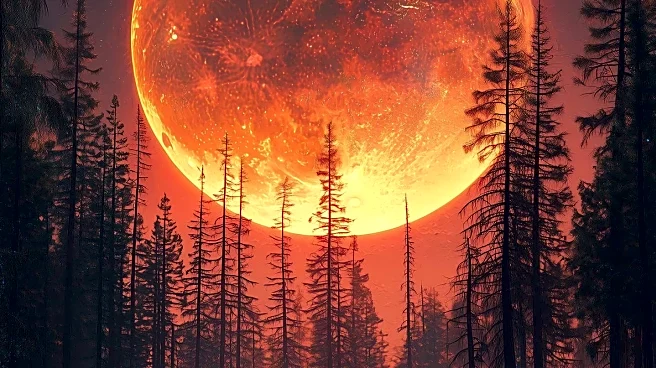Rapid Read • 8 min read
The Perseid meteor shower, renowned for its spectacular display, is set to peak late Tuesday night into Wednesday morning. This annual event, named after the Constellation Perseus, is celebrated for its bright and colorful meteors, with rates reaching up to 100 meteors per hour at its peak. The meteors originate from the debris of Comet Swift-Tuttle, which last passed Earth in 1992. This year, the peak coincides with a full moon, which may hinder visibility of the dimmer meteors. Despite this, the Perseids are expected to shine through, especially the brighter fireball meteors. Viewing conditions are favorable in the western states, northern Plains, and parts of the East Coast, while areas like the Southeast and Midwest may face cloud cover and rain.
AD
The Perseid meteor shower is a significant astronomical event, drawing interest from both amateur and professional stargazers across the U.S. Its occurrence provides an opportunity for public engagement with science and astronomy, fostering interest in space exploration and celestial phenomena. The event also highlights the impact of natural light pollution, such as the full moon, on astronomical observations, underscoring the importance of dark sky preservation. Additionally, the shower's visibility across various regions can boost local tourism and community events centered around stargazing.
As the Perseid meteor shower continues, viewers are advised to find locations away from city lights and utilize moon shadows to enhance visibility. The shower will remain visible through late week, offering continued opportunities for observation. Meteor enthusiasts may also look forward to other celestial events, such as the southern Delta Aquariids and Alpha Capricornids, although these are less intense. The ongoing interest in meteor showers may encourage further public and educational programs focused on astronomy.
The Perseid meteor shower serves as a reminder of the vastness and beauty of the universe, encouraging reflection on humanity's place within it. It also highlights the importance of environmental factors, such as wildfire smoke, which can affect visibility and air quality. The event may inspire discussions on climate change and its impact on natural phenomena, as well as the need for sustainable practices to preserve the night sky for future generations.
AD
More Stories You Might Enjoy










